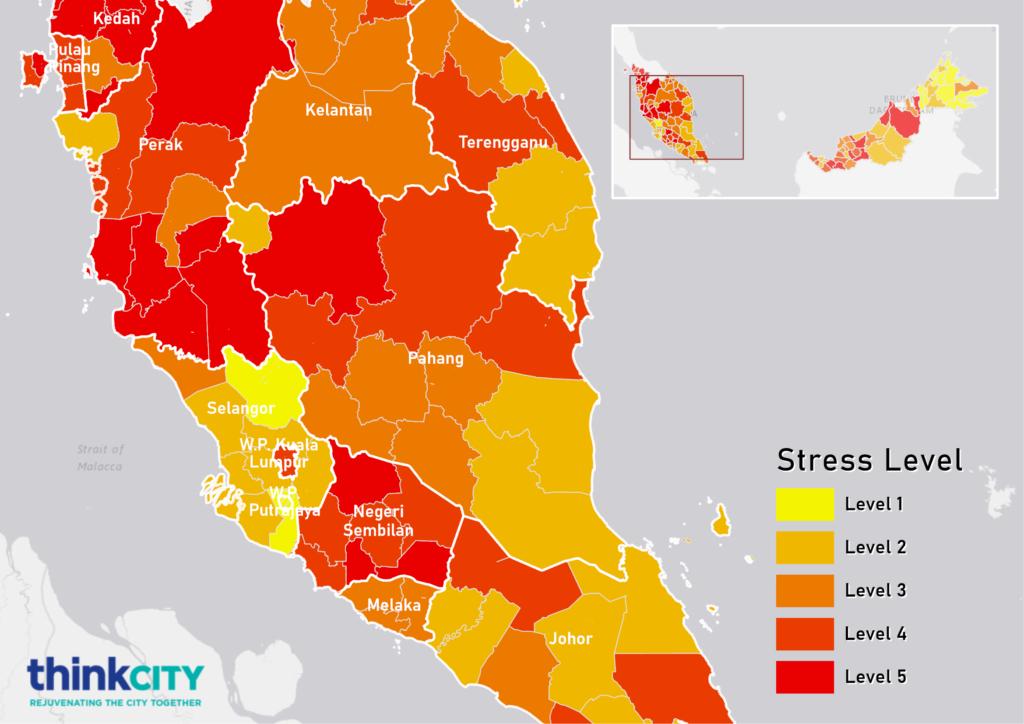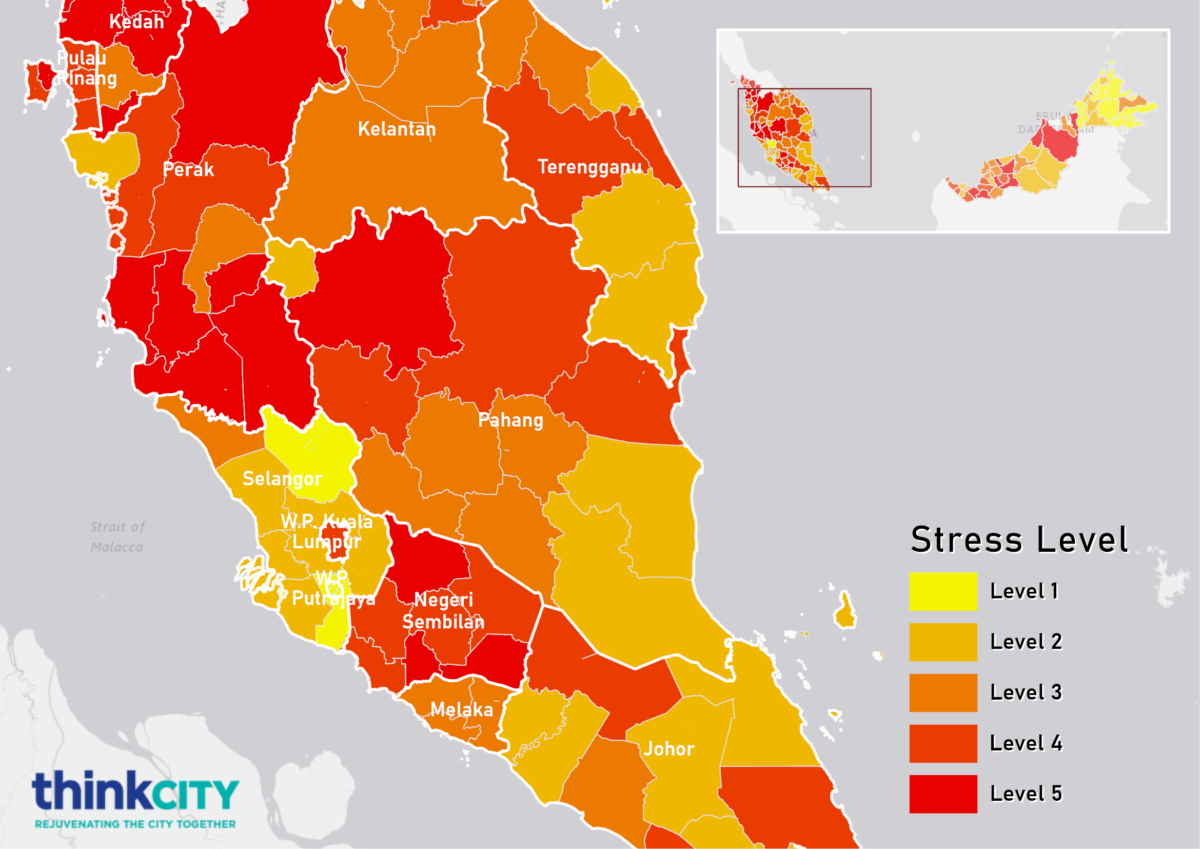
Mapping Vulnerability and Resilience in Malaysia
CROSS-CUTTING SECTORS
Good Governance, Technology, Resilience, COVID-19
ORGANISATION(S)
Think City
PROJECT OVERVIEW
Despite the socio-economic toll of public health interventions cited by numerous academics, there had been a lack of investigation into the inter-related nature of the COVID-19 impacts and how vulnerability and community resilience would play out spatially. This project aimed to tackle the lack of analysed data in Malaysia, to aid decision-making and raise awareness amongst the public regarding the different levels of impacts associated with Covid-19. A GIS (Geographical Information System) multi-criteria analysis was developed to model the relative social, economic, and health impacts and risks of the pandemic, with the overall aim of identifying vulnerable communities in Malaysia. The mapping tool can be found here. Key challenges included the lack of granular data to accurately map and identify specific sites of vulnerability, as well as ensuring that the data would not be outdated in the face of new reported cases and research produced each day. This exercise demonstrated the crucial role of data in addressing the uncertainties surrounding the pandemic and gaps in developing adaptive response plans and policies. The development of the mapping tool led to an urban policy paper titled ‘Mapping Vulnerability and Resilience: A decision support tool for policymakers’, which dissected the findings and made key policy recommendations based on the spatial and demographic inequality found through the analysis. The policy paper can be found here.
RELEVANCE TO THE CALL TO ACTION ON SUSTAINABLE URBANISATION ACROSS THE COMMONWEALTH
These examples have been chosen because of their relevance to the Call to Action, as shown by the direct quotes provided below. To view the Call to Action click here.
- Cities “are vulnerable to external shocks and natural disasters and are dealing with both the immediate and long-term effects of the COVID-19 global pandemic.”
- Universities, research, technology, innovation, and knowledge sharing will be at the heart of ensuring sustainable cities and human settlements of the future.
- “Sustainable urbanisation requires a commitment to good governance, integrated planning, effective service delivery together with fiscal and political empowerment.”
- “Sustainable urbanisation demands collective action – genuine multi-level governance – to empower, enable and support cities and their citizens.”
THIS EXAMPLE HAS BEEN PROVIDED BY
Think City: https://thinkcity.com.my/
